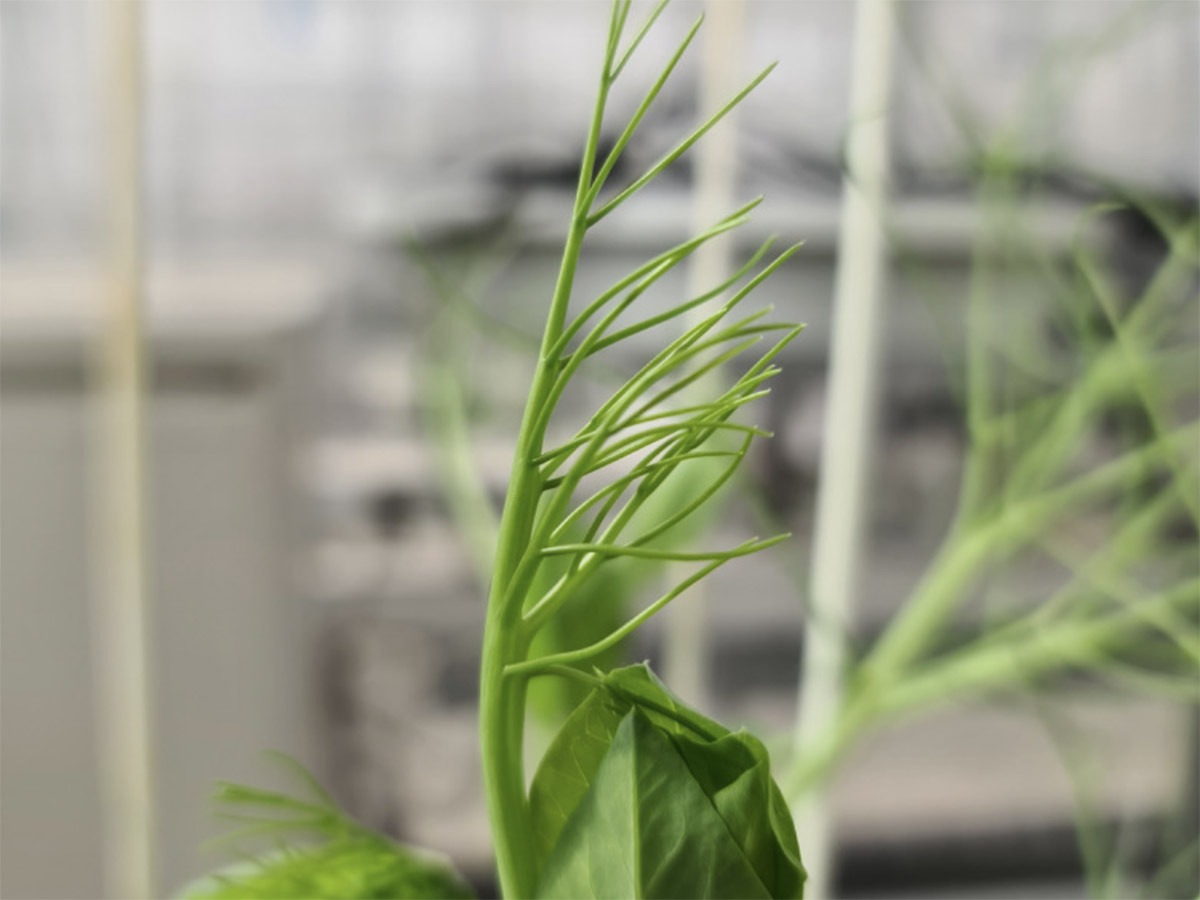April 6, 2023
Luke Wilkinson speaks to pioneering biotech start-up Plantae Bioscience about the tech triumvirate set to revolutionize yellow pea genetics and the challenges and opportunities of gene editing.


Plantae Bioscience has used three cutting-edge technologies to edit yellow pea genes
David Hart is head of Business Development and Eyal Emmanual is head of R&D at Plantae Bioscience. The company made the news last month for successfully removing the bitter taste from yellow pea protein, opening doors for accelerated development and innovation in the pulse protein sphere.
EE: The company started when three of the team of scientific founders at the Weizmann Institute had a vision of combining the three different disciplines and technologies that they were expert in and working together to solve big problems in plants and the environment.
The three scientists, Avraham Levy, Asaph Apharoni, and Sarel-Jacob Fleishman are world experts in gene editing, metabolic engineering, and computational protein and enzyme design, respectively.
They were looking for a commercial partner and found Huminn, our mother company that focuses on solving a variety of humanity’s problems in diverse areas. Together with Yeda, the tech transfer of the Weizmann Institute, they set up Plantae as a company that would take technologies from each of these professors. They brought me in to help assemble the R&D team translating this powerhouse of innovation into products.
DH: As Eyal mentioned, Plantae wants to solve big problems with plants and use those three technologies, which can be synergistic or additive, so we can do new and valuable things.
For example, one of the things that we started was the project on yellow peas, as well as important work on vertical farming and plant cell culture. The big idea is to look at the stresses the food system is under and to understand the need for new food production technologies.
It’s also about understanding that those new technologies need new genetics. Plants aren't moving as fast as the world is changing, and using the tools we have we can create new genetics in a fast and focused way.

David Hart and Eyal Emmanuel
EE: For choosing our projects there needs to be a clear market need and potential to bring revenues back to our investors.
DH: One of the targets put up on our ideas board was alternative proteins. The need for new and different sources of protein is huge, so yellow peas were important and we feel they’ll get more and more so – yellow peas are the plant protein 2.0 after soy. Soy is still a huge market, but it is very mature and not as popular.
EE: The story of plant-based protein could be split into two halves: one is quantity, and the other is quality – i.e. taste and the organoleptic side of things.
Plant-based protein needs to be colorless and tasteless, because if they bring their own flavor then they affect the taste of the products. People know that a compound called 'saponins' in peas deliver a bitter taste that is usually masked by adding salt, sugar, or ingredients added in processing.
Professor Aharoni is one of the world's leading scientists in special metabolites and worked for many years on different aspects of bitterness across the plant kingdom, so he has a lot of understanding as well as unique Intellectual Property (IP).
From that IP we set up a system that allows us to use gene editing for yellow peas, creating edits to genetic traits that are inherited from one generation to the next. In this case we aimed to reduce the production of saponins. We now have new generations of plants showing a 99% decrease in saponins.
“The story of plant-based protein could be split into two halves: one is quantity, and the other is quality”
EE: We are in the process of scaling up the seeds and putting them into a broader test to see how this reduction in saponins affects the taste of the yellow peas further along the line. This process is being conducted now, and we are expecting results soon.
When it comes to scaling up we wouldn't be inventing anything new, you just need to maximize the time you're growing them year-round by growing in both the North and South hemisphere. We’re in the process of looking for the relevant players who can help us with this.
As with any breeding company, having these seeds grown in larger quantities is the next step, and that usually takes a few years as you're starting the whole process from just one plant.
What people need to think of is the fact that CRISPR enables you to introduce specific changes and have this selectively bred plant in little more than a year and a half.
“What people need to think of is the fact that CRISPR enables you to introduce specific changes and have this selectively bred plant in little more than a year and a half.”

Plantae’s research removed 99% of bitterness-inducing saponins from yellow pea
DH: As part of the search for alternative proteins, other pulses could definitely be a target, but we’re not looking at any at the moment. We're looking to see where this is going to go and the technology we developed could also be used to edit other traits in yellow peas. The fact that we've made a transformation and regeneration protocol for yellow peas that allows you to use CRISPR tools – it's kind of a big deal!
As Eyal said, we’re looking for the right partners we can work with. It's a win-win – they get to speed up their breeding process through our advanced technologies and we have a partner who can give us the ability to bring things to market.
No more pulses in the pipeline for now, but look, we live in Israel and people love to eat hummus here, so who knows!
EE: If someone comes in and says, 'we’ve seen what you've done with yellow peas, now I want to do that with another crop.' — that’s something we'll be glad to do. We see yellow peas as the first proof of technology, and if we want to broaden it out, we’d prefer to find the relevant partner to do that.
EE: We were able to take the technology that emerged from Google Deepmind to predict protein structure as it emerged and combine it with Professor Fleishman’s technology as part of a joint research effort with his lab. It's enabled us to predict proteins with high accuracy and combined with our licensed technology– you ascertain the structure, you make the design better, and together these things deliver your desired effect.
Any improvements to AI, or any of our technologies, helps us to do our work better and better.
DH: One of the important things to note is that we don't use any transgenes. The genes and enzymes responsible for the metabolic pathways in the plants come from the gene arm of the plant itself, so we’re not adding in any foreign DNA.
In most parts of the world that brings you to a pretty clear regulatory path that is relatively simple. Europe excepted, gene editing and the types of edits we’re making would be accepted relatively easily from a regulatory perspective. In the EU, gene editing is considered GMO, but we're starting to see signs of that changing and I would expect in the next five years that Europe would become more similar to the US in terms of regulation.
DH: One of the things that we have done is look for plants to have enhanced nutrient content. We took nutrient dense plants and mashed two matrices on top of each other: the first with health indications like cardiovascular health, cognitive function, immune support, etc. Then on the other matrix we look at the different nutrients and phytonutrients that can help support those health functions.
Then we put them together and look at the metabolic pathways, gene editing, and so on.
The same approach can be used across different plants. With yellow peas it seemed clear that the taste of pea protein was an issue — if we're looking at chickpeas, I know that disease resistance is an issue. Each plant has its own set of what we call 'techno-economic conditions' that need to be considered to make it work better in the food system.

Plantae Bioscience / gene editing / David Hart / Eyal Emmanual / yellow pea protein / pulse protein
Disclaimer: The opinions or views expressed in this publication are those of the authors or quoted persons. They do not purport to reflect the opinions or views of the Global Pulse Confederation or its members.